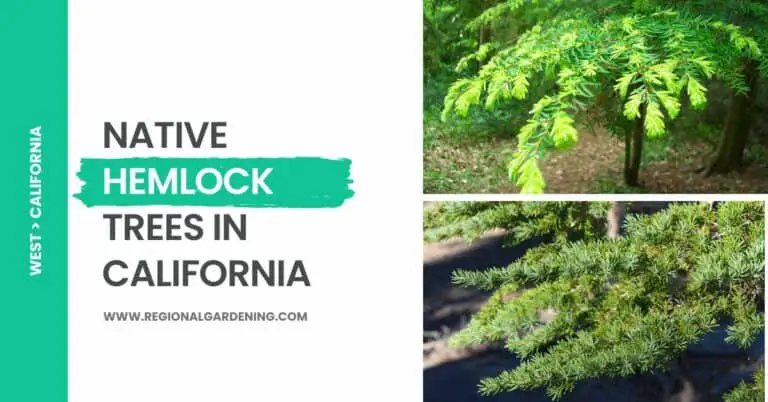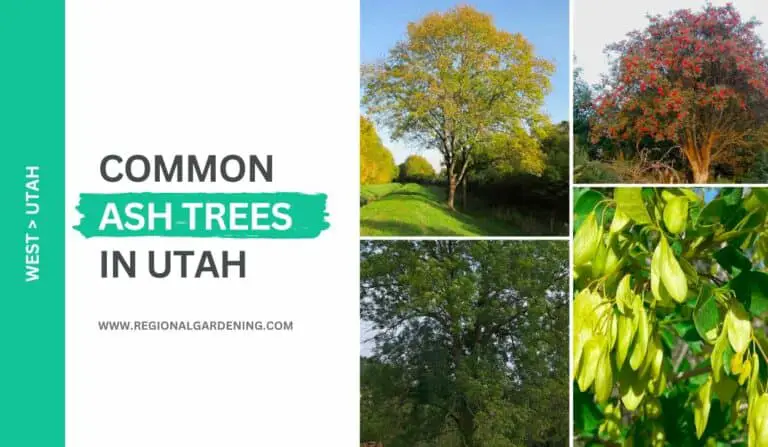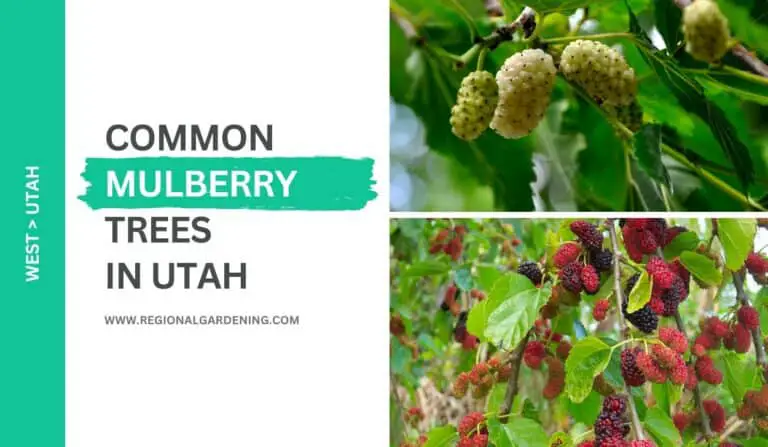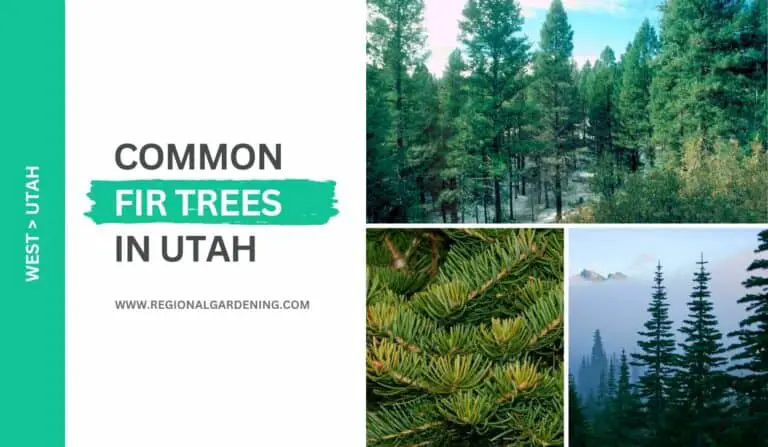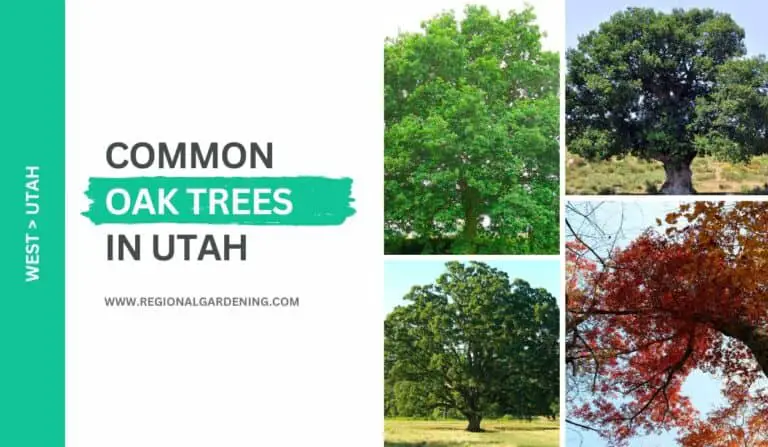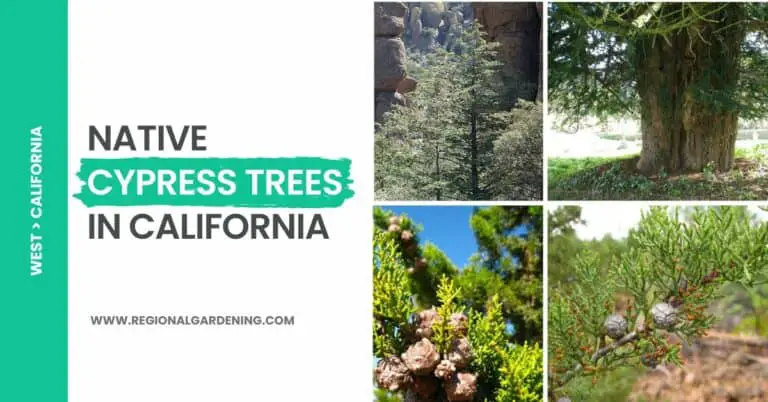4 Common Nut Trees In Utah (Photos & Identification)
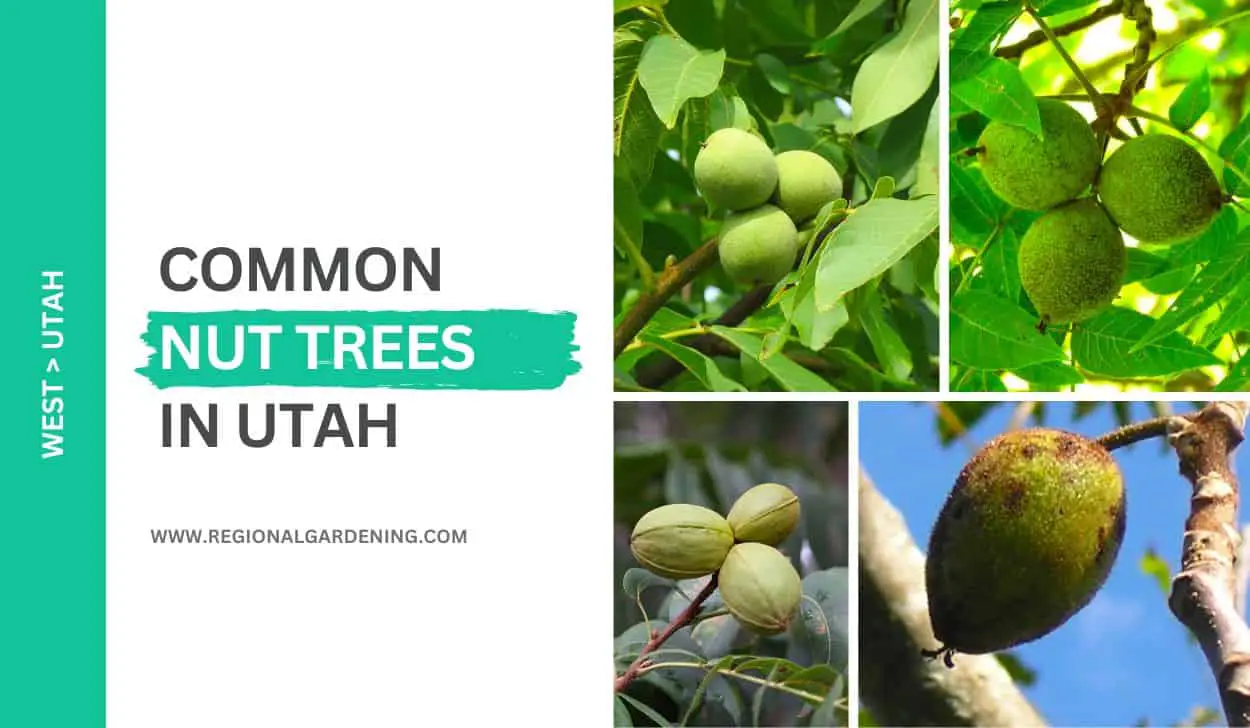
Utah is home to a diverse array of nut trees, some native to the region while others have been transplanted from distant lands. These remarkable trees not only add natural beauty to Utah’s landscapes but also bear delectable nuts.
Let’s take a closer look into the unique qualities of each tree, their preferred habitats, and the uses they hold for both humans and wildlife. For generations, native species like the Arizona Walnut and Butternut have been cherished in the state.
So, let’s begin exploring the common nut trees in Utah.
1. Butternut
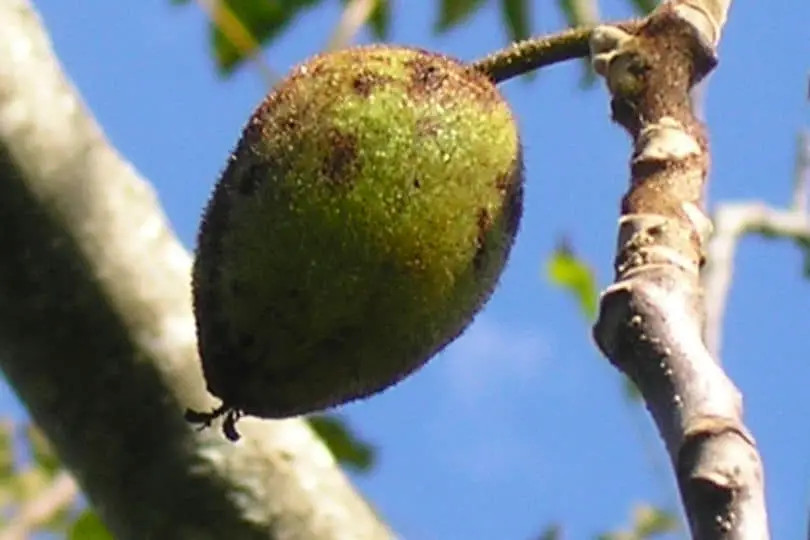
- Scientific Name: Juglans cinerea
- Mature Height: 40-60 feet
- Native/Non-Native: Native
- Flowers/Nuts: Inconspicuous yellow-green flowers and oval-shaped nuts enclosed in a thick, sticky husk
- Uses: Timber, nuts, wildlife habitat
The Butternut trees are one of the most common native nut trees in Utah. It is a medium-sized tree that can grow to be 40 to 60 feet tall when mature. The Butternut tree has a broad, open crown with deep furrows and a characteristic gray bark.
The Butternut tree produces small yellow-green blossoms in the spring that are not particularly striking. These flowers, however, are necessary for pollination and the subsequent development of the tree’s fruit. The Butternut tree’s fruit consists of oval-shaped nuts encased in a thick, sticky husk. These nuts are edible and have a rich, buttery flavor, earning them the nickname “Butternut.”
The Butternut tree is highly regarded for its light-colored, fairly coarse-grained lumber. It is employed in the manufacture of furniture, cabinets, and veneers. Humans and wildlife both harvest and consume the nuts of the Butternut tree. However, the Butternut tree is under threat from a fungal disease known as butternut canker, which has severely damaged this species’ numbers.
Aside from its economic value, the Butternut tree provides habitat and food for a variety of wildlife species. Birds use its branches as nesting locations, and squirrels and other animals eat its nuts. With its lovely foliage and unusual bark texture, the tree is also valued for its decorative value.
If you are thinking about planting a Butternut tree, keep in mind that the species is vulnerable to butternut canker, and efforts are being made to conserve and maintain this unique tree. Butternut trees prefer full sun and flourish in moist, well-drained soils. It can be a lovely addition to landscapes and woodlands, providing both utilitarian and aesthetically pleasing benefits.
2. Black Walnut
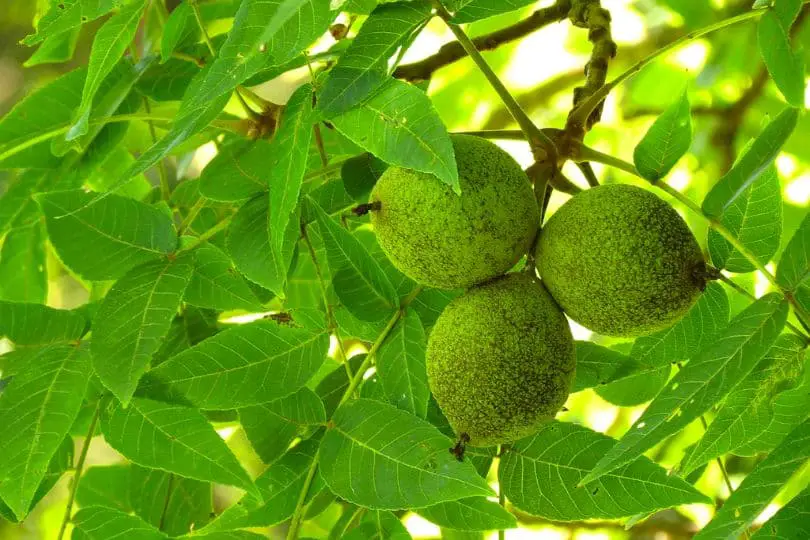
- Common Name: Black Walnut
- Scientific Name: Juglans nigra
- Mature Height: 70-100 feet
- Native/Non-Native: Native to the eastern half of the U.S. but planted in Utah.
- Flowers/Nut: Small flowers that grow in long catkins. The nut inside has sweet and oily strong-flavored meat within.
- Uses: Nut can be eaten, and the wood is used for lumber, fine furniture, and veneer.
The black walnut tree can grow to be 100 feet tall. It is our most valuable hardwood and has a reputation for generating high-quality wood. The sapwood ranges from white to light brown, while the heartwood is chestnut brown. It has prominent growth rings and is semi-ring-porous. Although Black Walnut is not as valuable in Utah as it is in other states due to a lack of markets and lower-quality trees for timber and veneer.
Black Walnut leaves can grow up to 2 feet long and have 15 to 23 leaflets. The leaves are ovate-lanceolate in form with serrated margins. The rachis is thick, and the terminal leaflet is frequently absent. The twigs are thick and light brown, with chambered or split pith that ranges from yellow-brown to brown. A thick, glabrous, yellow-green, fleshy husk that eventually turns black and becomes wrinkled surrounds the spherical nut that makes up the fruit. The inside of the nut has a rough, dark, and very hard shell with sweet and greasy strong-flavored meat.
Black walnut is native to the eastern portion of the United States, but it has been planted in Utah. Despite being a non-native species, it is one of the very commonly planted nut trees in Utah.
It requires rich, deep, well-drained bottomland soil and can grow to be quite huge under ideal conditions. Although it can be a wonderful, huge shade tree, the nuts can make a mess. Branch dieback or death of Black Walnut trees in northern Utah has lately occurred due to borers or an unknown disease.
3. Arizona Walnut
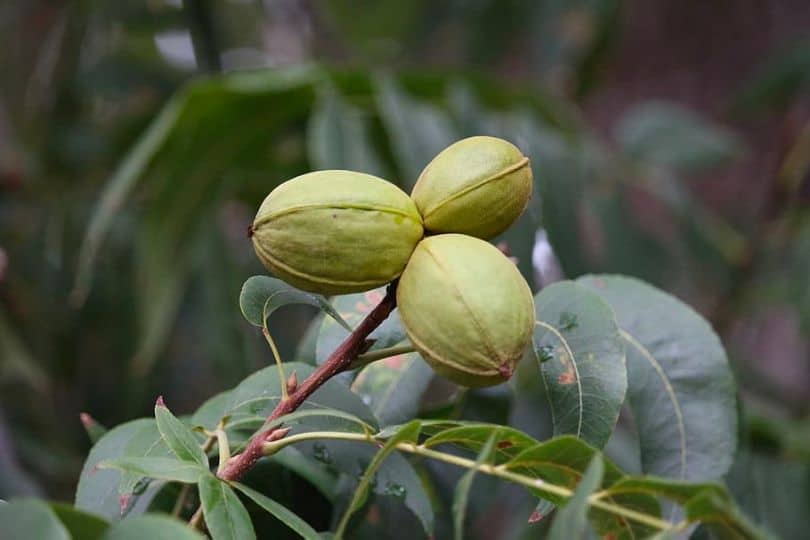
- Common Name: Arizona Walnut
- Scientific Name: Juglans major
- Mature Height: 30-50 feet
- Native/Non-Native: Native
- Flowers/Nuts: Inconspicuous flowers; round, green nuts with a hard shell
- Uses: Wildlife habitat, shade tree
The Arizona Walnut (Juglans major) is a native tree species found in the southwestern United States, mainly in Arizona and New Mexico. When completely matured, it is a medium-sized tree that can reach a height of 30 to 50 feet.
The Arizona Walnut has modest, unobtrusive blossoms that are not particularly striking. Wind-pollinated blossoms give way to spherical, green nuts with a firm shells. Squirrels, birds, and small mammals rely on the nuts of the Arizona Walnut for sustenance.
This native tree is well-adapted to its range’s arid and semi-arid conditions. It can withstand dryness and is commonly found in canyons, washes, and other riparian environments. The Arizona Walnut is well-known for providing important shade in these hot and arid areas.
The primary benefit of the Arizona Walnut in terms of usage is as a habitat tree. Its branches and foliage provide bird habitat and nesting locations, while the nuts supply nourishment for wildlife. Furthermore, the wood of the Arizona Walnut is strong and may be utilized for a variety of woodworking projects.
4. English Walnut
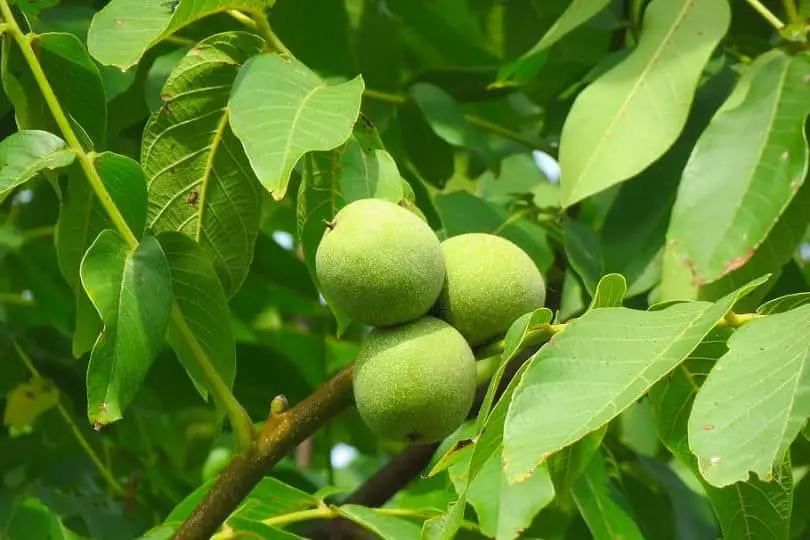
- Common Name: English Walnut
- Scientific Name: Juglans regia
- Mature Height: Up to 50-75 feet tall
- Native/Non-Native: Non-Native
- Flowers/Nuts: Nut has a smoother shell than black walnut.
- Uses: Mostly grown for its tasty nuts which are used in cooking, baking, and in many food dishes.
The English Walnut, sometimes known as the Persian Walnut, is a tree that can be found around the world. Although it is not native to the United States, it is one of the most often available types of walnuts in supermarkets. The tree can reach heights of 50-75 feet and bears leave with 5-9 leaflets with complete edges. The English Walnut, in particular, has a thinner shell than its cousin species, the Black Walnut.
The English Walnut is native to southeastern Europe, the Himalayas, and China, and it has been widely cultivated for food production around the world. Although it loves rich, deep soil, it is shade-intolerant and prefers regions with plenty of sunlight.
English walnut can also be planted in protected and warmer sections of Utah for beautification. It is not, however, as cold-resilient as the Black Walnut tree. There are two varieties known as ‘Carpathian’ and ‘Hansen’ that are more cold-hardy than other English Walnuts. Because of their flavor, English walnuts are used in a range of cuisines and snacks, and they are one of the most commercially available walnuts in the United States.
It is commonly planted for food production, is shade-intolerant, and prefers deep, rich soils. Because of its flavor, English Walnut has effectively adapted to various parts of the world and is becoming increasingly popular in the United States.
Common Nut Trees In Utah – Frequently Asked Questions (FAQs)
Here are some of the most commonly asked questions about nut trees in Utah.
Are there any nut trees in Utah?
There are nut trees in Utah and they are pretty common in urban gardens. The most commonly found nut trees in the state include Black Walnut, Butternut, Arizona Walnut, and English Walnut.
Can almond trees grow in Utah?
Almond trees (Prunus dulcis) thrive in warm climates with mild winters and hot summers. While almond trees are typically grown in Mediterranean climates such as California’s Central Valley, they may not be well-suited to the climate in Utah.
Utah has a colder climate, especially in the winter, with temperatures dropping below freezing. Almond trees are cold-sensitive and can be damaged or killed by severe frost or prolonged freezing temperatures. As a result of the state’s colder climate, growing almond trees in Utah may be difficult.
Similar Articles
- Common Oak Trees In Utah
- Common Pine Trees In Utah
- Common Mulberry Trees In Utah
- Common Magnolia Trees In Utah
- Common Ash Trees In Utah
- Common Spruce Trees In Utah
- Common Elm Trees In Utah
- Common Birch Trees In Utah
- Common Poplar Trees In Utah
- Common Maple Trees In Utah
- Common Dogwood Trees In Utah
- Common Cedar Trees In Utah
- Common Pear Trees In Utah
- Common Willow Trees In Utah
- Common Alder Trees In Utah
- Common Cypress Trees In Utah
- Common Beech Trees In Utah
- Common Juniper Trees In Utah
- Common Fir Trees In Utah
- Common Plum & Cherry Trees In Utah
- Common Palm Trees In Utah
Sources
The Regional Gardening team makes sure that the information in our articles is accurate by only using sources that are known to be trustworthy. Some of these sources are peer-reviewed journals from government agencies, well-known universities, and scientific research organizations.
- Trees & Shrubs In Yard And Garden, Utah State University Extension
- Native & Non-Native Tree Identification, Utah State University Forestry Extension.
- Native Plants, Utah Native Plant Society.
- A Guide To The Trees Of Utah & Intermountain West, Book By Michael Kuhns, Utah State University Press.


